GIMP: the free, open-source software option for photo editing
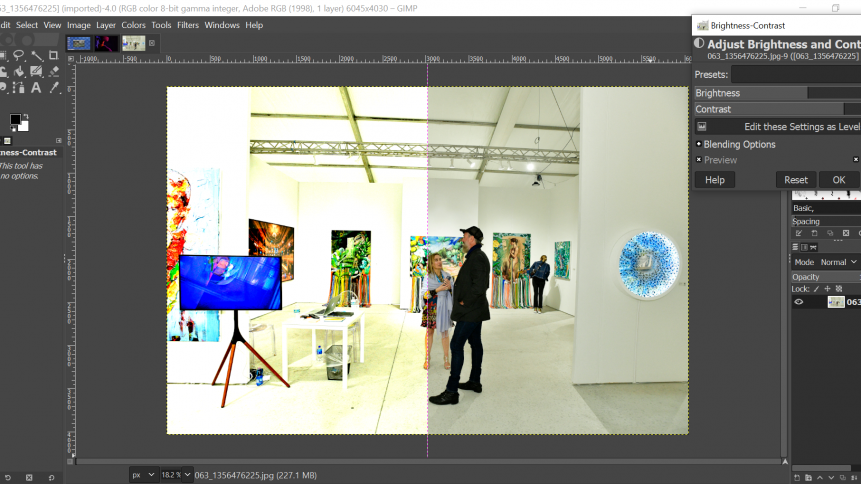
Since being first cultivated by special effects engineers at visuals house Industrial Light & Magic to produce an array of practical effects shots for the original Star Wars films in the 20th century, the photo editing software Photoshop has continued to be a significant presence in the 21st century.
From pioneering revolutionary image enhancement techniques to creating a whole stable of toolkits and editing methods, Adobe’s Photoshop (PS) has become synonymous as the premier photo editing software for commercial and even personal image enhancement. It works just as well on bespoke birthday card imagery as it does on professional layouts like ad posters and restaurant menus.
Along with Illustrator, Photoshop creator Adobe has spawned an entire suite of photo, video, and creative tools, from prepping materials to be edited, right down to post-production editing. But while Photoshop might be ubiquitous as the primary photo & image editing software for pro designers and studios, its success has also come with drawbacks that might not make it the most accessible tool on the market – especially for novices, amateur content creators, or those on limited budgets.
While there are many alternatives out there when it comes to photo editing software – ranging from browser-based tools to bundled software that comes preinstalled on cellphones – one of the standout programs that sets itself to be a genuine challenger to PS is GIMP, the GNU Image Manipulation Program.
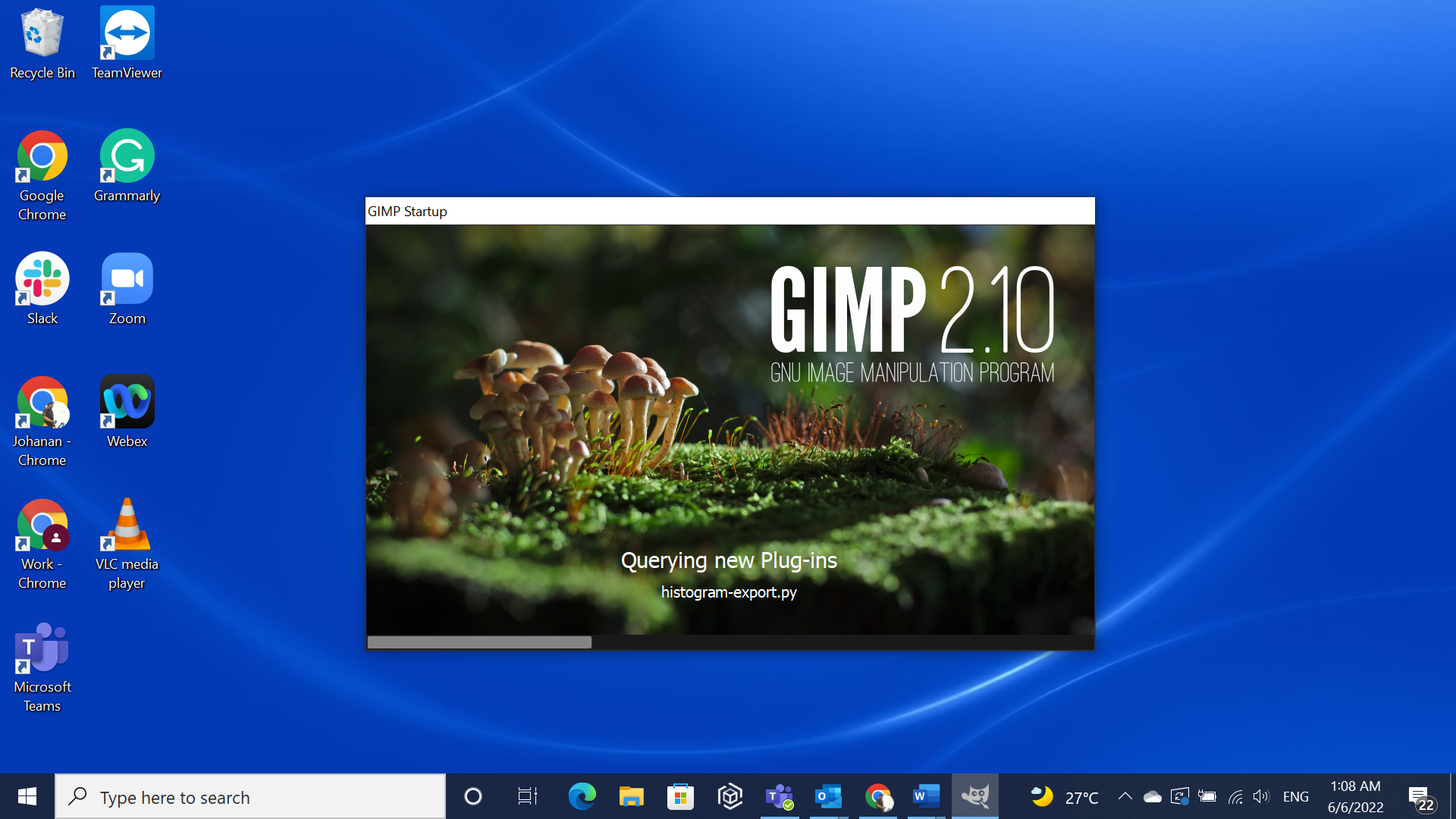
Plugins can be downloaded to flesh out GIMP’s functionality to be more like Photoshop. Source: TechHQ
GIMP has been called a Photoshop-killer for many reasons, but one of the primary ones is that the open-sourced software is essentially free to distribute and use. Until very recently when Adobe Creative Cloud allowed subscriptions to Adobe software for as little as US$10 a month, Photoshop developed a reputation as being exorbitantly expensive.
With a one-time fee approaching US$700, Adobe was very aware it had the flagship photo editing software on the market – and charged accordingly. The first benefit to using GIMP is that it can be tested out with no upfront commitment, and, unlike Photoshop, downloading and running GIMP takes up very little PC processing power. That makes it suitable to run on last-generation or even veritably old hardware.
Photoshop is one of the heaviest and most demanding editing tools for imagery, with designers often decrying its steep system demands, not just to run the software, but to render and store processed images. This might be less cumbersome on an office iMac, with storage and RAM paid for by the company, but it can still be extremely prohibitive for the small design studio or the enthusiastic amateur.
While Photoshop can usually want up to 4GB of hard disk space, GIMP takes as little as 20MB. Not only is GIMP much smaller to store and run, it is also way faster to install and set up. This writer was able to source the GIMP .exe file and download it locally, and finish setting up – all within 15 minutes. There are versions for Mac, Windows and Linux, and the source code is available to compile from scratch, should that be your idea of fun.
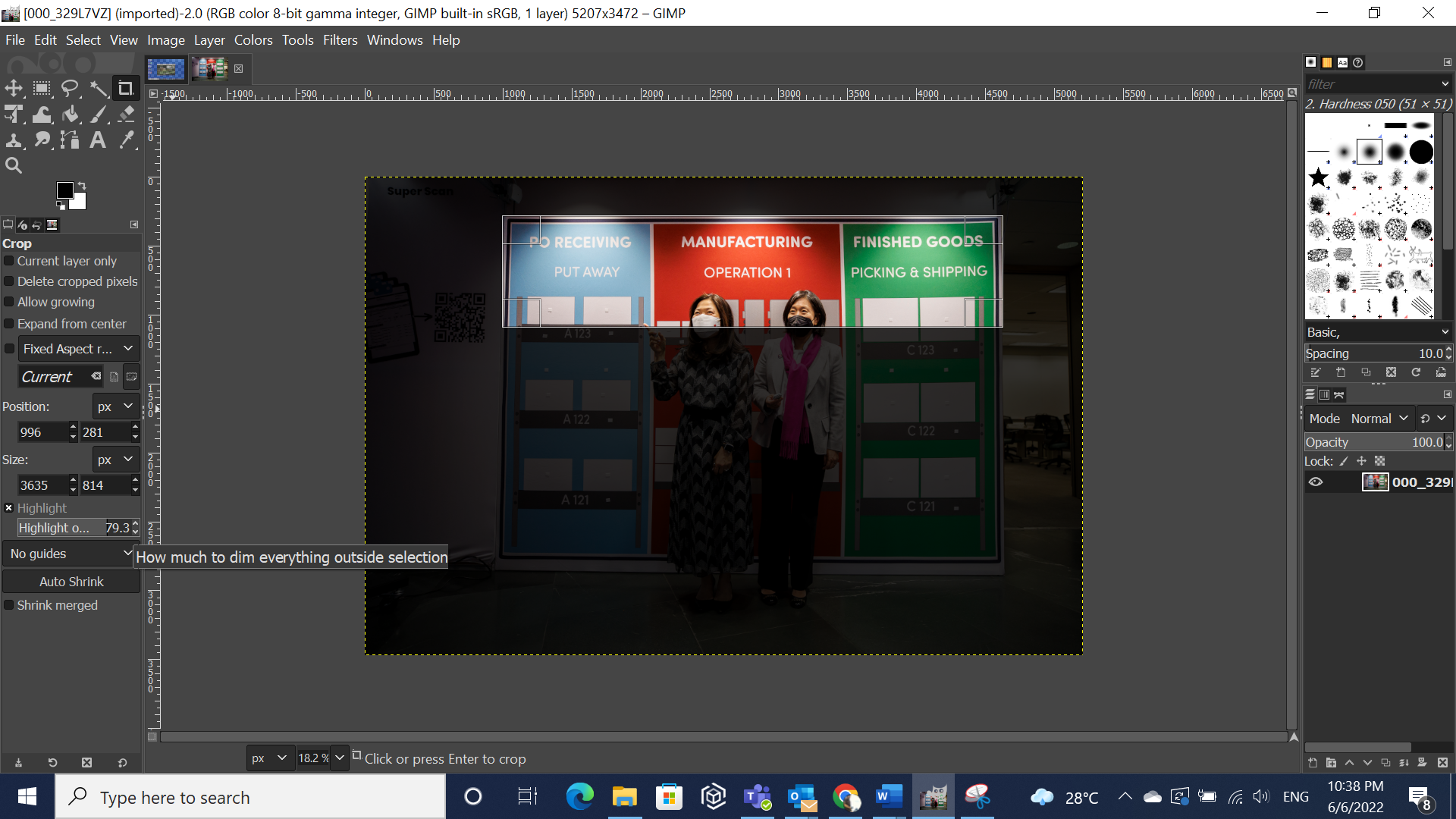
Many of the same core functions as Photoshop are available — except for the low, low price of absolutely free. Source: TechHQ
Once fully installed, it is highly customizable on many levels, including the user interface. This might be something that was inspired by Photoshop, but Photoshop has come to have to cover a wide gamut of design disciplines, and so contains many hundreds of features it’s accrued over the years. For relative beginners there are, for instance, lighting effects that may not get much use – but it’s good to know they are there.
GIMP clears away a lot of feature clutter, with tools that you are unlikely to utilize being easily removed or minimized from the main UI. The customizability of its features extends beyond managing the interface, and because of its open-source code, there is a thriving catalog of independent plug-ins or extensions that can be downloaded and added to the core application.
For example, there is a ‘Heal Selection’ featurette that can be downloaded, to perform the same function as ‘Smart Remove’ that is built-in on Photoshop. So even though Photoshop is kitted out with every feature from bow to stern, a lot of it might be surplus to regular requirements – but if you ever need a super-specific capability that Photoshop has, you can bet the open-source community has created something similar, or maybe even better, for GIMP.
For an untrained, unpracticed Luddite like myself, playing around with Photoshop can be pretty daunting. Not only are there scores and scores of features and adjustments that can be made to an image, even performing the same repeat functions can be challenging if one has not memorized the order to perform them in. It can almost seem like trying to play particularly complex sheet music transcriptions of hard-bop jazz.
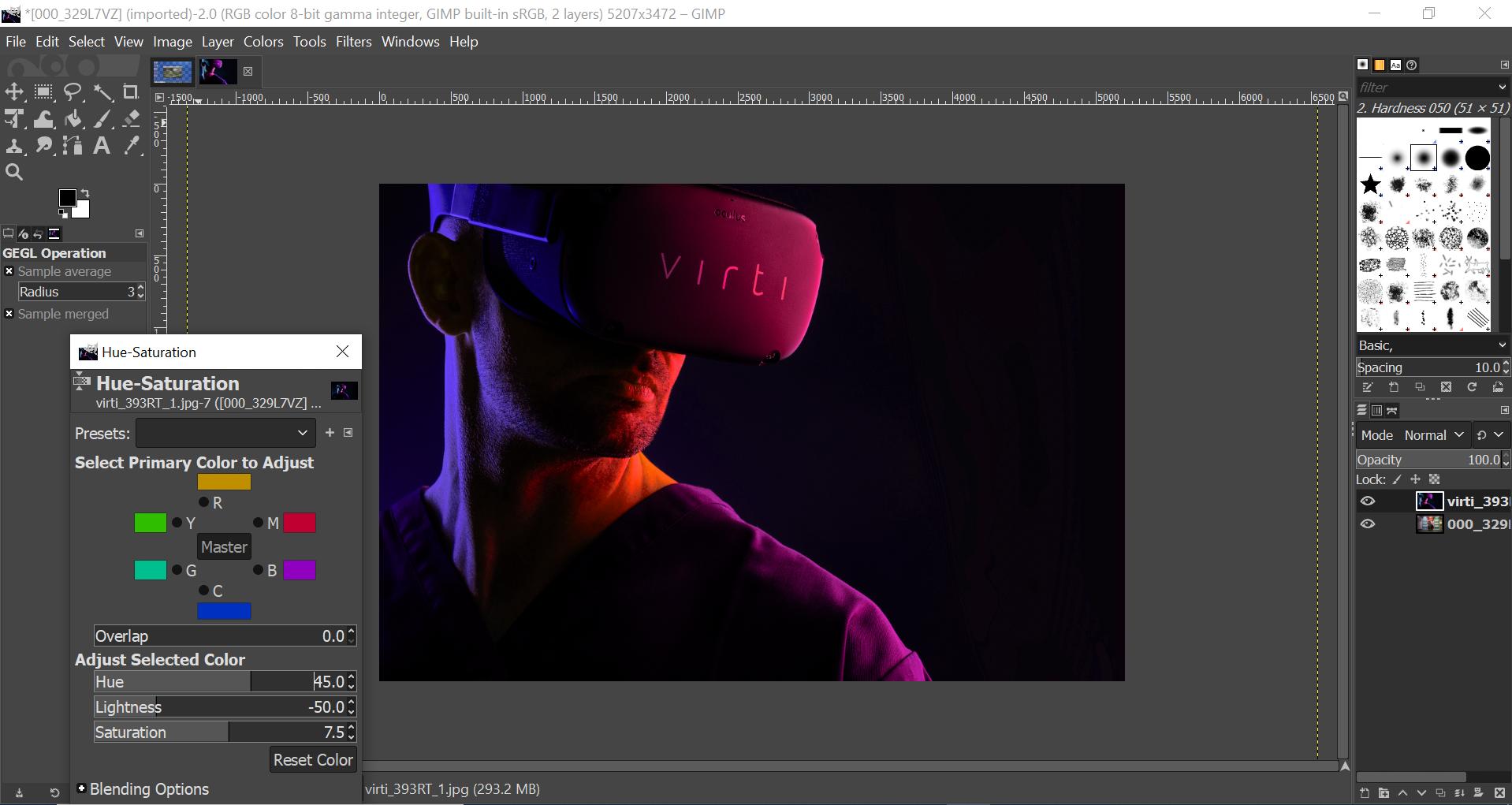
Despite being so much lighter to install and run in contrast (no pun intended) to Photoshop, a lot of the color palettes, masks, and layers can often be indistinguishable between GIMP and Adobe’s premier software. Source: TechHQ
A lot of usability is boiled down in GIMP, made more user-friendly (read, idiot friendly) and is significantly easier to pick up for a photo editing software rube – indeed, it’s much easier for anyone, even for someone with only a passing familiarity with photography disciplines and terminology.
For instance, conducting repeat actions (or ‘batch process’) on a big collection of photos is easily performed on GIMP. This could be an important commercial function, as repeating processing with the same tints or themes that fit a company’s branding or campaign direction might be what’s called for; and no doubt called for on a tight deadline.
But inexplicably, batch processing on Photoshop is an unwieldy and cumbersome process, requiring setting everything up with preprogrammed actions. And for the uninitiated, that could take a long time, plus there’s the unavoidable waiting for everything to be processed. That’s often followed by finding out later that the group edits didn’t take on a bunch of images. Problems like these are, admittedly, pilot error, but in business settings where time is short, the ability to make fast edits can be pretty important. Clients don’t like delays one bit.
But while both photo editing software suites have excellent features support, it must be said that some of the more powerful shared tools work better in Photoshop. Features like pixel manipulation are much more powerful and granular on Photoshop, owing no doubt to the more powerful processing the program relies on from the more modern hardware stipulated in its specifications sheet.
YOU MIGHT LIKE

Adobe readies to launch no-code AR tools for businesses
Another drawback with GIMP is it lacks some diversity when it comes to color modes and file formats. Like to print final artworks, using the CMYK color mode is necessary – GIMP only processes using the Red Green Blue (RGB) mode by default; print designers will need a further plug-in to print imagery with accurate colors.
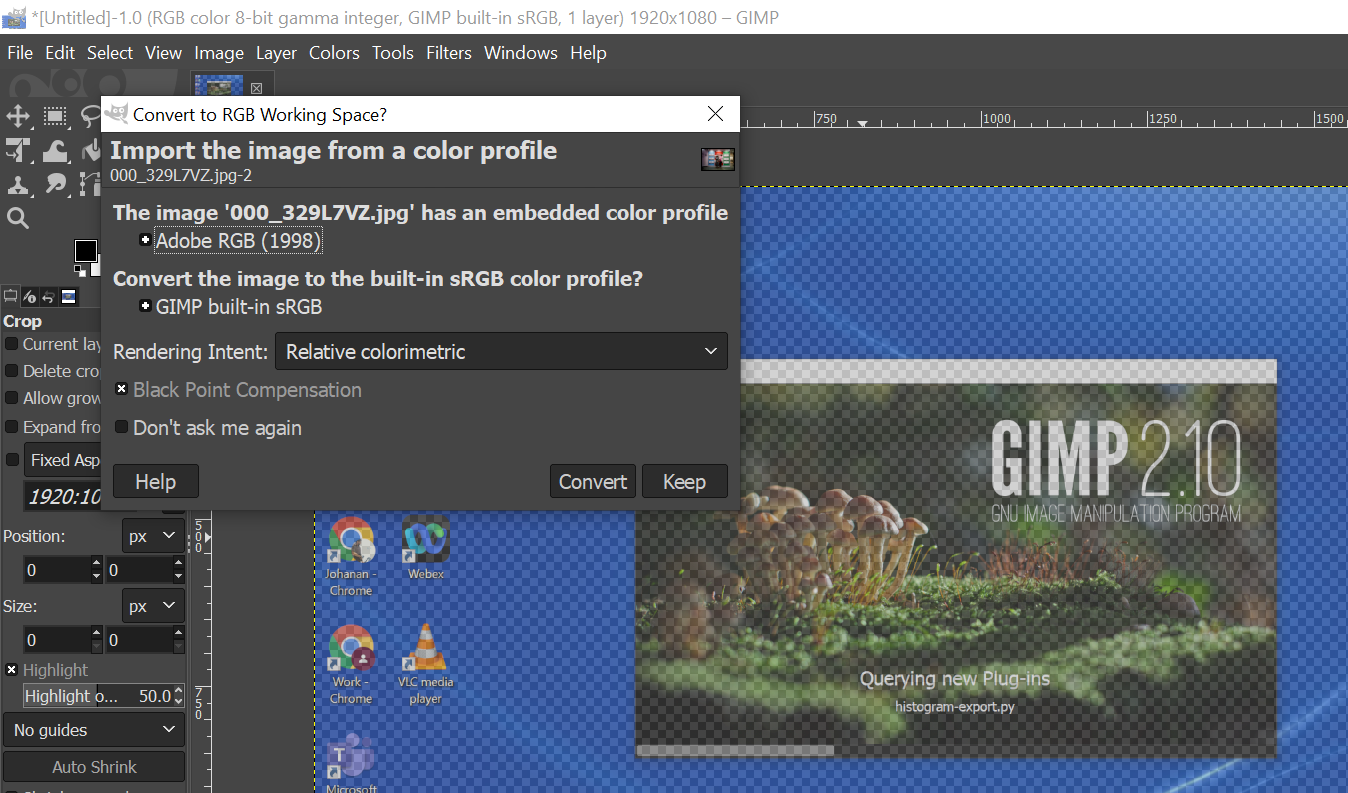
GIMP only processes using the Red Green Blue (RGB) mode, a further plugin would be needed to print using Cyan Magenta Yellow Key (CMYK), the preferred printing color mode. Source: TechHQ
And with Photoshop, any edits are saved as a separate exported file, preserving the original. To the uninitiated like me using GIMP for the first time, unwittingly pressing ‘save’ would actually overwrite the original file, meaning I would now have an edit without the base file. Exporting edits as a separate file can be done, but it is not straightforward.
But of course, there is a far larger team working constantly on Photoshop, upgrading its capabilities as one of the most dominant photo editing softwares of all time. With Adobe Creative Cloud, new updates are auto pushed to subscribers, and can be downloaded seamlessly.
By contrast, the GIMP team of freelance developers from the open-source community work hard, but their results are nowhere near as large or well-provisioned as the Adobe crew’s. Nevertheless, considering the differing capacities, it is astounding that the GIMP team still manages to roll out new updates every few months, just like Adobe. Having said all that, GIMP is due for a big update soon, to version 3.0. Watch out for that.
So when the dust settles, is GIMP a genuine alternative to Photoshop? GIMP is extremely worthy, especially for beginners or those who have just basic editing needs of professional quality and with a range of aesthetic functionality including filters, opacity, transformations, saturation, and brightness contrasts. Its filters and certain modes are not as refined as Photoshop’s but it is still a very handy and sophisticated palette to work with. Approaching Photoshop’s polish and sophistication in some aspects, GIMP is most certainly worth much, much more than its asking price – which is, theoretically, nothing at all. Of course, if you use GIMP and find it useful, sending a few dollars to the project’s maintainers will help assure that development continues.









